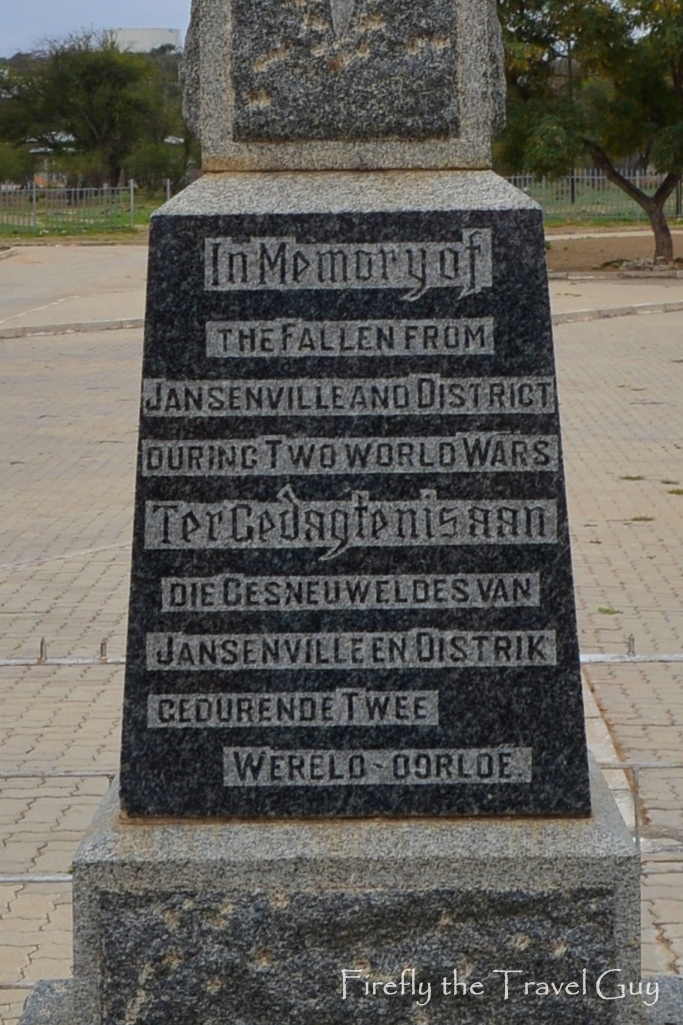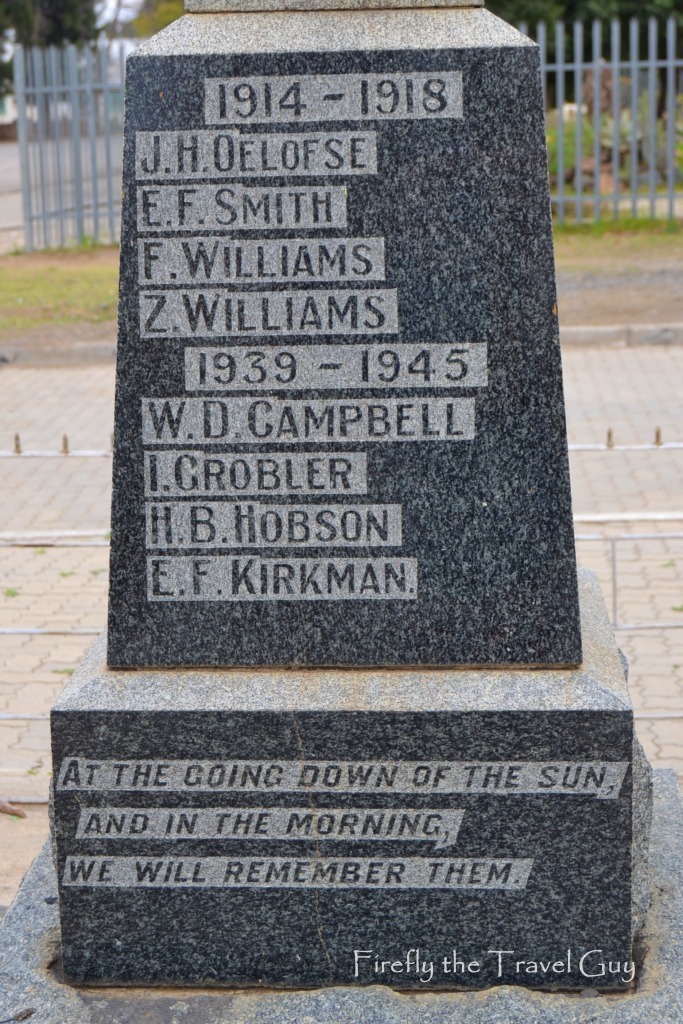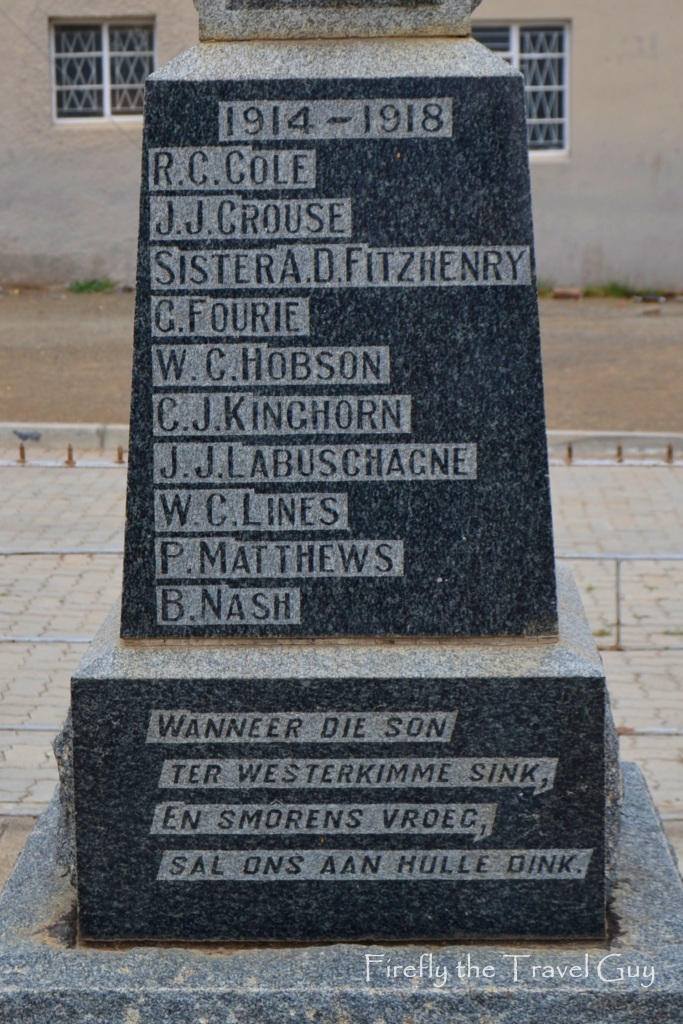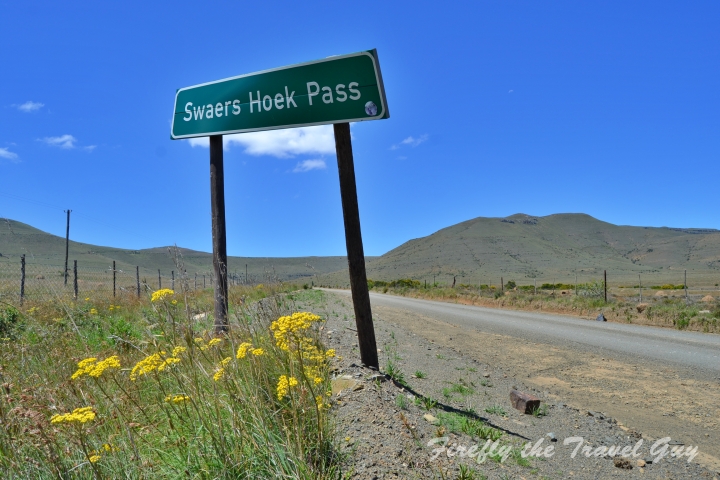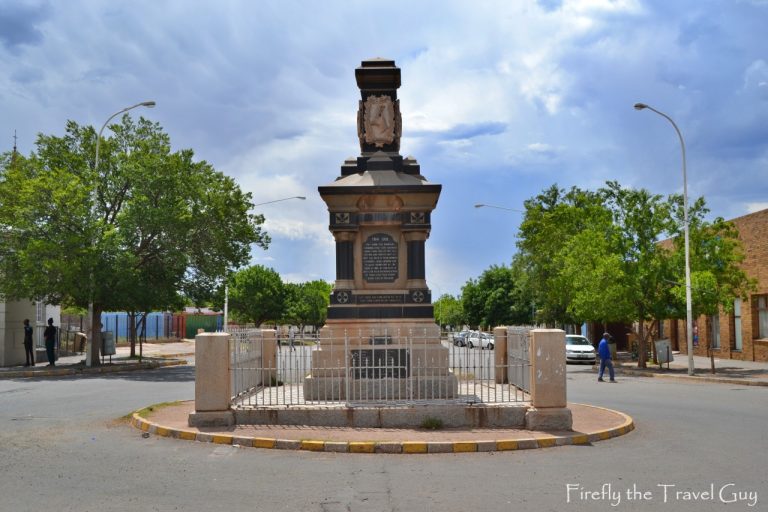
The town of Jansenville is located in the Noorsveld, an area about 90 kilometers south of Graaff-Reinet and known for its dry, arid climate and its abundance of succulents. The need for a new parish in the district was evident from 1848 and the establishment of the village is largely due to the efforts of Minister Alexander Smith from Uitenhage who visited the congregation once a quarter. In 1853 Petrus Fourie arranged for the layout and survey of about 80 erven on his farm Vergenoegd for the establishment of a town. He suggested naming the town Alexandria in honor of Alexander Smith. Unfortunately, by the time the application reached the authorities at the Cape, another community near the coast had beaten Fourie to the name. It was then decided to name it Jansenville in honor of General Jan Willem Janssens, the last Dutch Governor at the Cape, and Commander of the Dutch forces at the fateful Battle of Muizenberg.
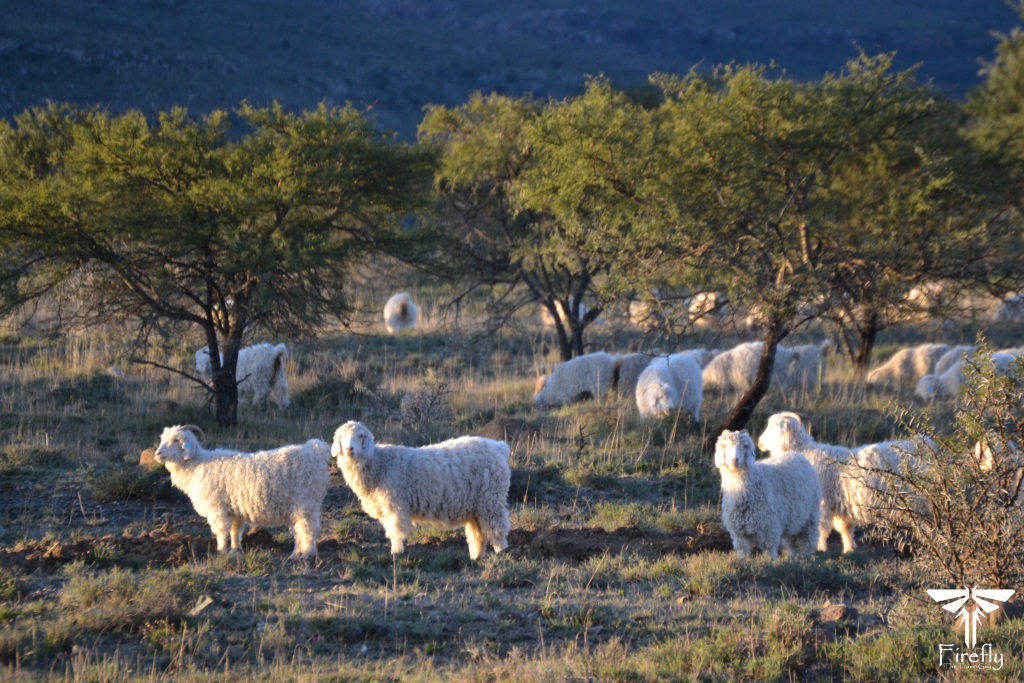
Jansenville quickly grew into a thriving agricultural community. The town’s location in the Noorsveld made it ideal for farming sheep and goats. In the late 19th century, Jansenville became a major center for the mohair industry. Angora goats are well-suited to the harsh climate of the Noorsveld, and their hair is highly prized for its softness and durability. The earliest Angora flock in the Jansenville district was established from stock imported by William Cary Hobson on the farm Martyrsford in 1871. Today, Jansenville is still a major center for the mohair industry. The town is home to the South African Mohair Growers Association and the Angora Goat Breeders Society of South Africa. Jansenville is also known for its production of wool, lucerne, and other agricultural products.
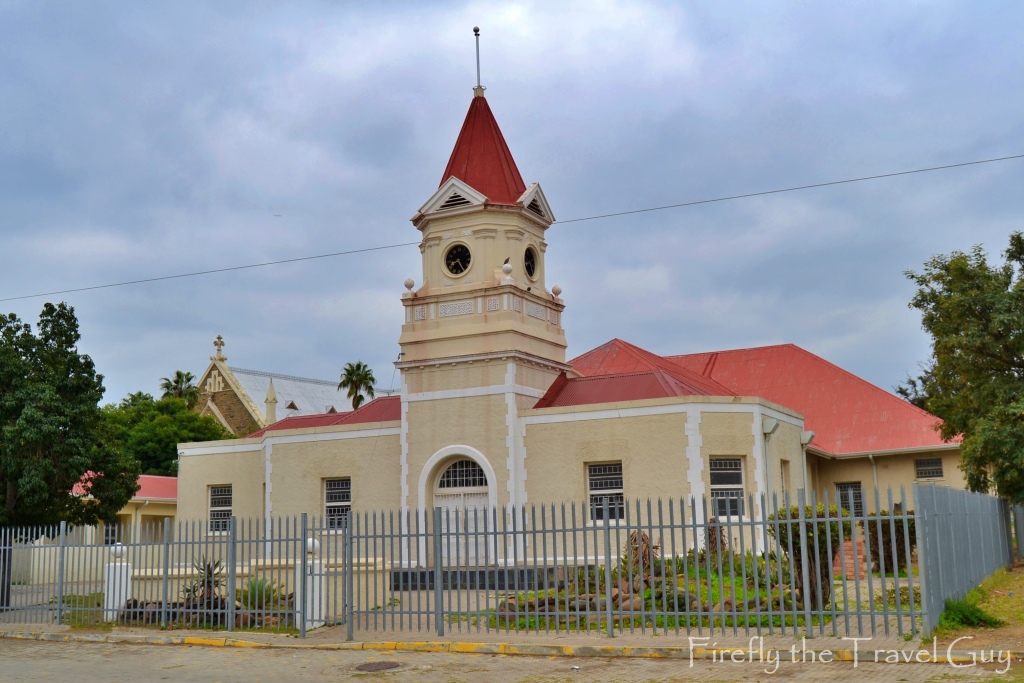
The Jansenville Townhall is one of the town’s historic buildings.
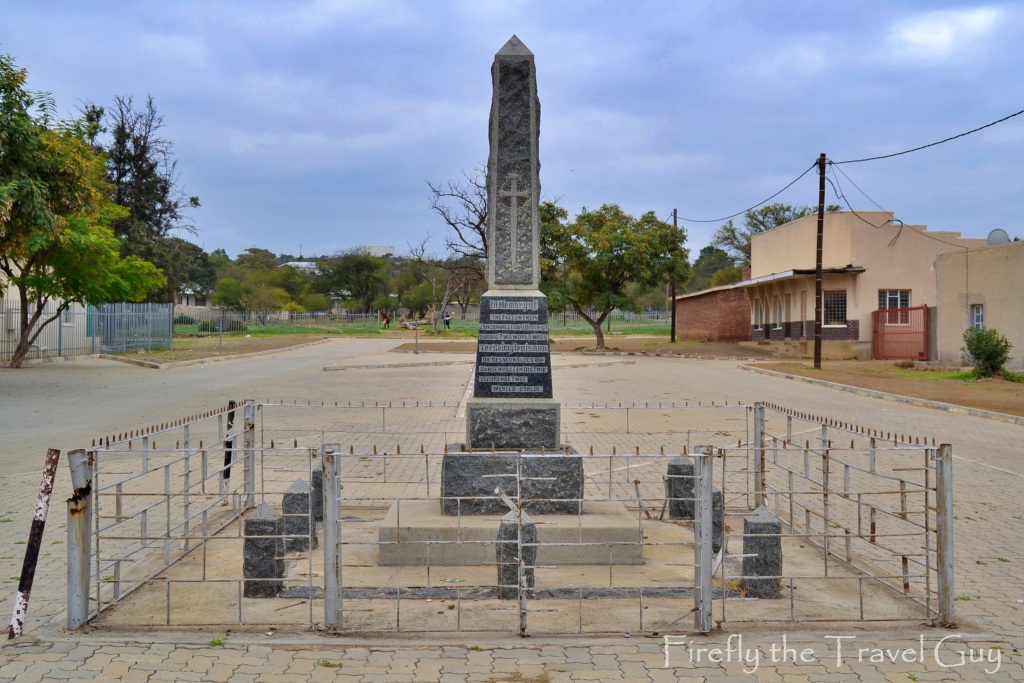
Next to the Town Hall stands a war memorial that was first put up after the First World War and amended after World War 2. It displays the names of men from the town and district that died during the two world wars.

